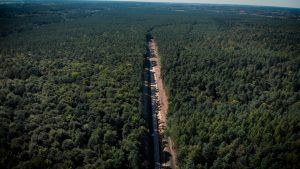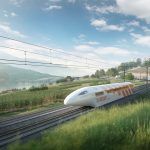 Nevomo has completed the first stage of construction of the longest passive magnetic levitation track in Europe.
Nevomo has completed the first stage of construction of the longest passive magnetic levitation track in Europe.
In the south-eastern part of Poland, on the premises of CIECH Sarzyna in the Podkarpackie voivodeship, a railway track measuring 700 metres in length was built in a construction standard allowing to reach a speed of up to 160 km/h (99.5 mph).
The magnetic levitation track built in Nowa Sarzyna will be used to test magnetic levitation, vehicle and infrastructure operation, power system operation and vehicle-infrastructure cooperation.
“At the beginning of March, we began installing the equipment necessary for magnetic levitation – a linear motor between the rails, a levitation-stabilising raceway on the outer rail area, and a power supply system. In the meantime, we are also assembling a prototype of the vehicle we want to levitate,” Łukasz Mielczarek, Head of Infrastructure and Co-founder of Nevomo said.
Nevomo intends to start full testing of the hyperloop-inspired MagRail technology this summer and the successfully completed tests will pave the way to implement a pilot. This will be carried out with RFI, Italy’s rail infrastructure manager.
The MagRail technology has been developed by Nevomo to significantly increase the efficiency of existing rail infrastructure. This solution makes both magnetic vehicles and conventional trains possible to operate on the same lines without making any changes to the existing rolling stock. Thanks to the linear electric propulsion, advanced automation and the phenomenon of magnetic levitation, rail vehicles will be able to run on existing railway tracks with speeds of up to 550 km/h (342 mph).
MagRail allows fully automated driving, increased frequency, catenary-free and human error-free operation, with timetables adapted to the needs of passengers and changing passenger flows. As a result, the implementation of MagRail technology will significantly increase the capacity of railway lines and reduce maintenance costs by approximately 20-30%. MagRail also means lower construction costs compared to high-speed railways.
The project is co-financed by the European Union from the European Regional Development Fund (ERDF) under the Intelligent Development Programme. The project is implemented under the competition of the National Centre for Research and Development called Fast Track.
Share on:






